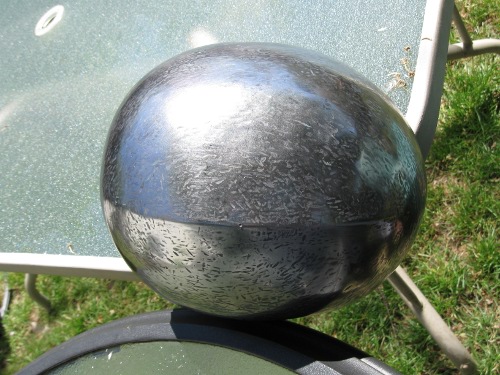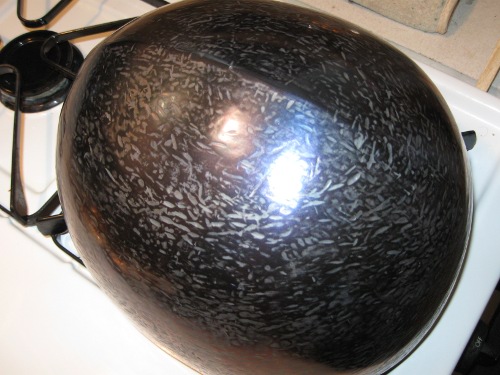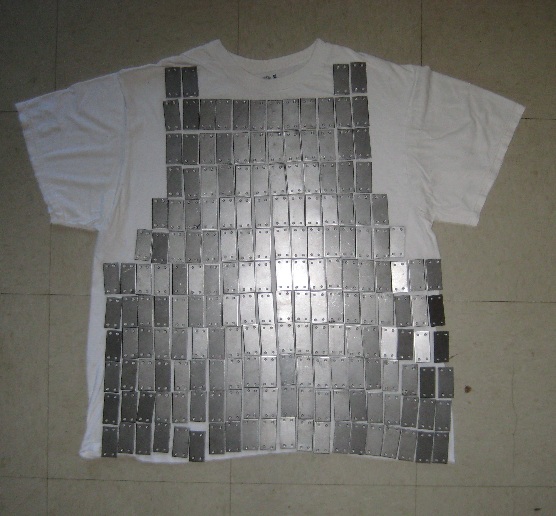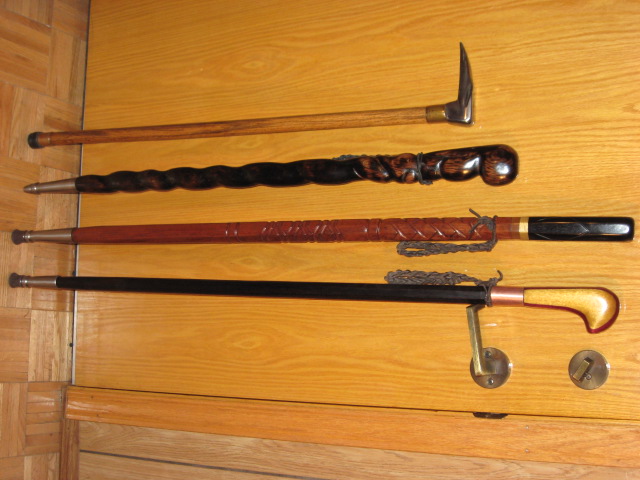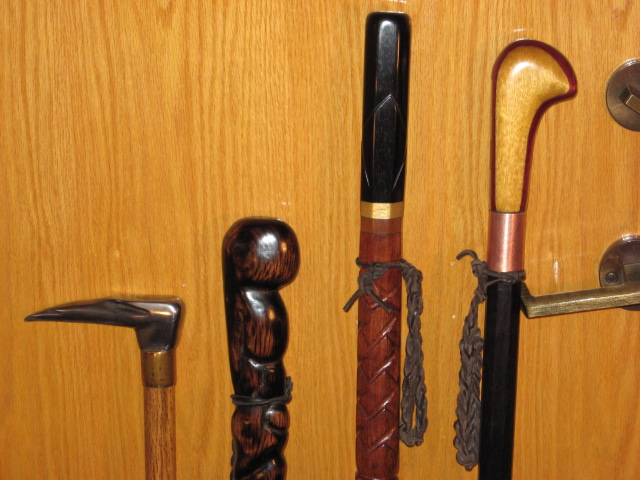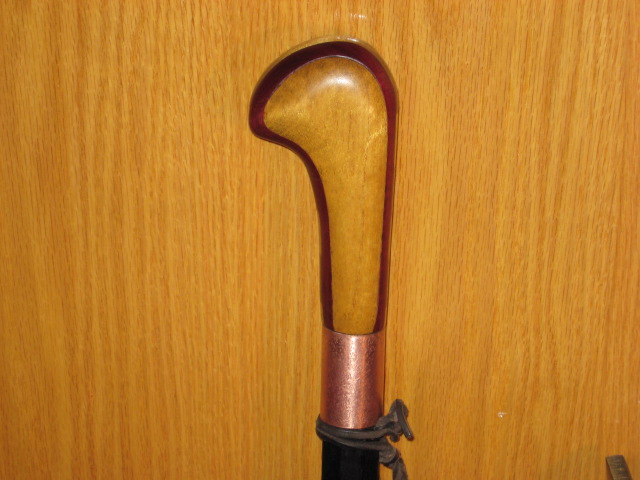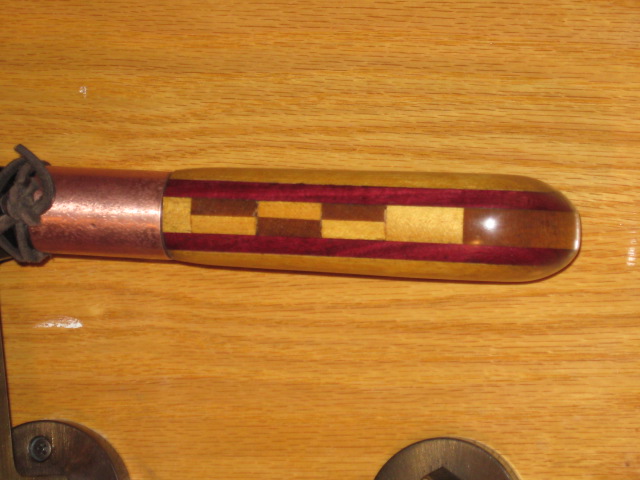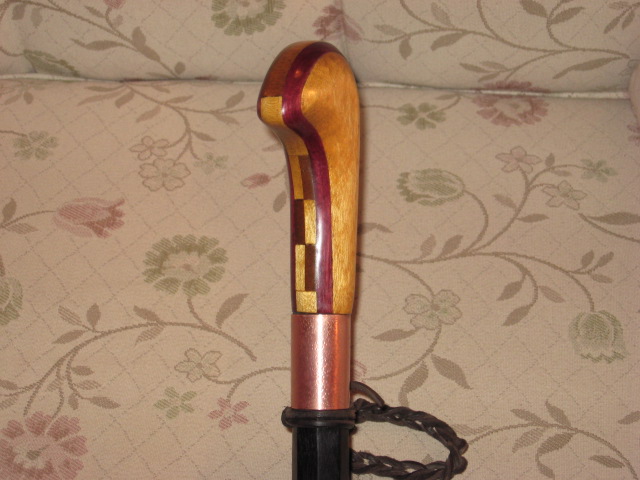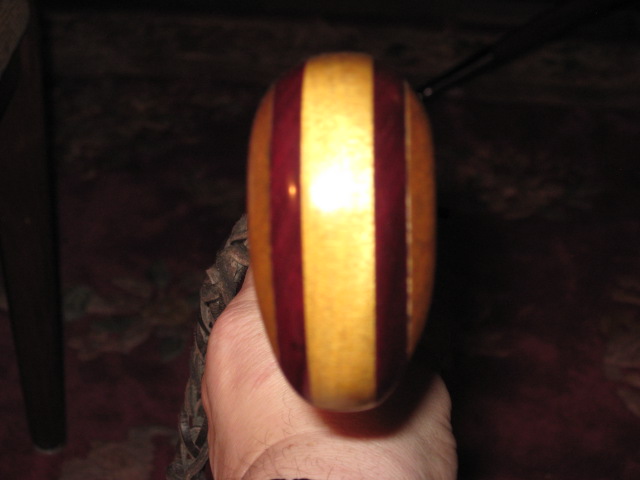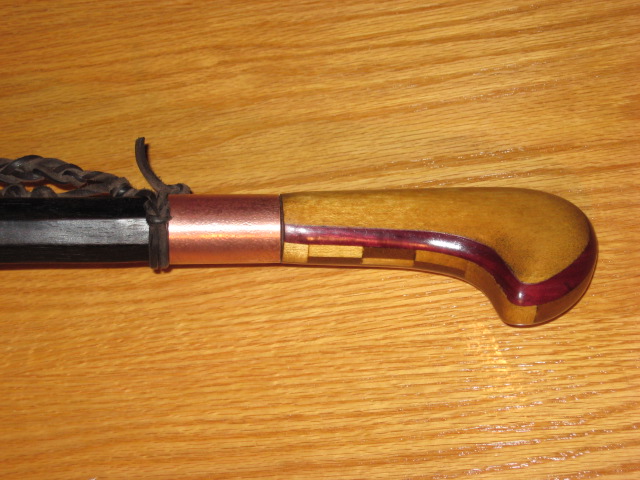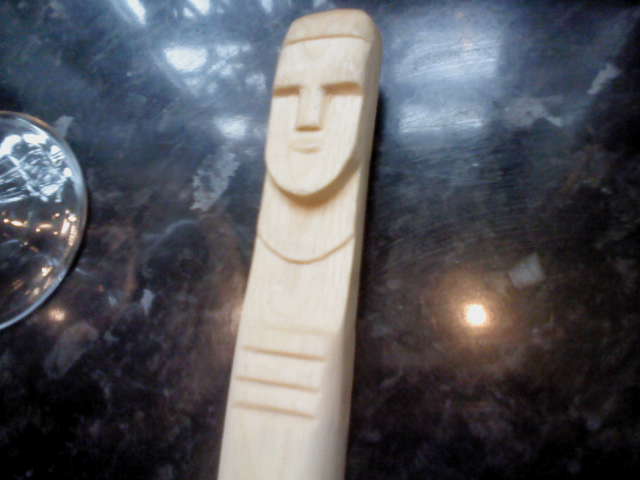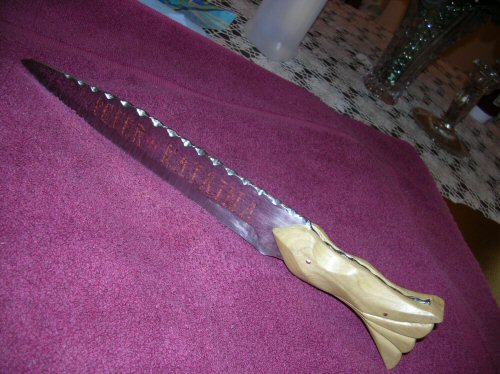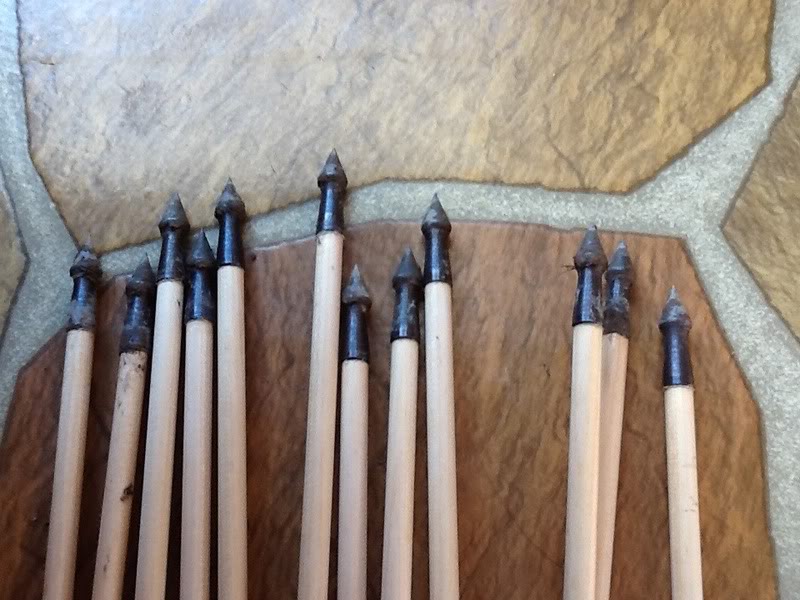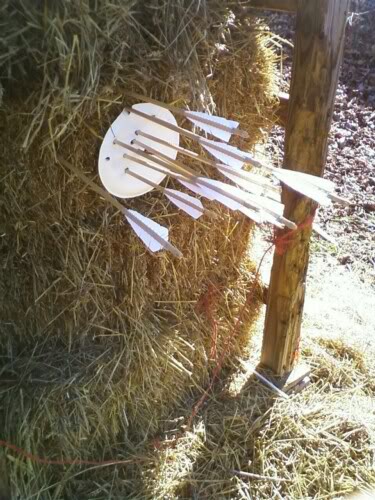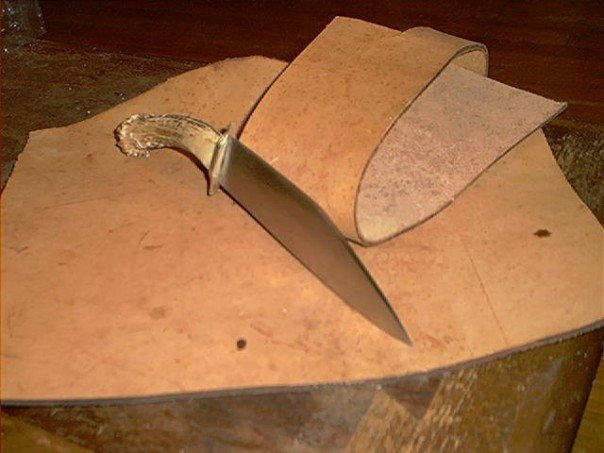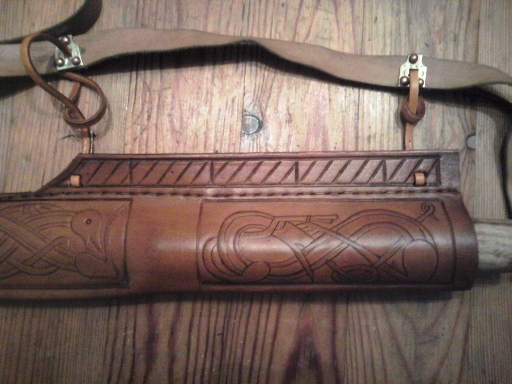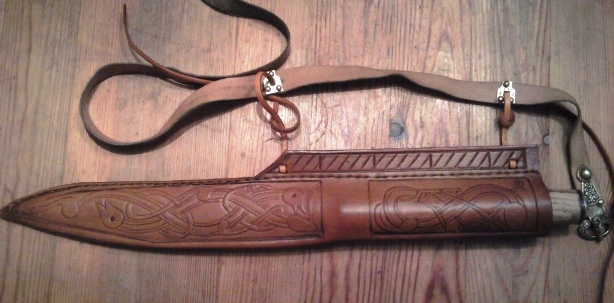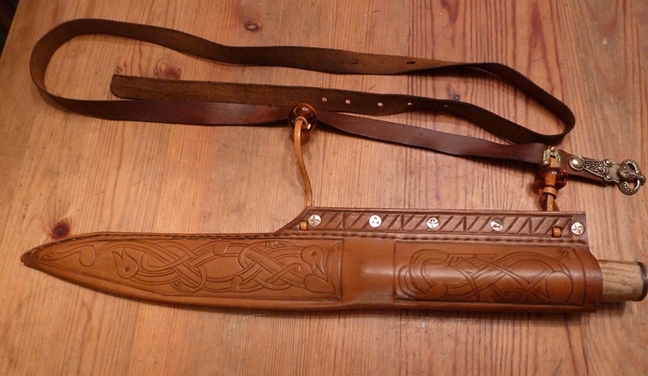Posts: 793 Location: Stockholm, Sweden
Tue 05 Jul, 2011 7:07 pm
Some of my more recent projects.
Norman style belted Gaddhjalt
The Z-loop holding the scabbard can be seen on Sancho IV:s burial sword from late 1200s, but the earliest record is from an image in Ivar the Boneless life biography (art is from 11th century, but depicing mid 8th century when he lived). Several similar attachment methods can also be seen in the Bayeux tapestry. The belt is a typical Norman fork tounge style. Feels like a western revolver holster riding yout hip when strapped on, a perfect part of your body.
[ Linked Image ]
3 pieces make the belt, Z-piece, belt with strap holes and belt with fork tounge. They're stitched together with a peculiar seam seen on the Sancho IV sword.
[ Linked Image ]
[ Linked Image ]
Scabbard is pine core, oval hollowed and lined with lambs pelt with a firm but light grip. The draw is quick but the blade won't fall out if you hold it upside down. The core is covered with calf leather stitched end to end and water shrunk and casein glue laminatinated to the core for extra durability.
[ Linked Image ]
The blade is a sharp full tanged Hanwei Tinker line Viking replacement blade fitted with my own hand made Gaddhjalt fittings.
[ Linked Image ]
Gjermundbu maille research and production
This image mostly shows the punched from plate solid rings, but also some riveted together weave. These are tinly links almost like jewelry.
[ Linked Image ]
[ Linked Image ]
Mass produced pakistani boar hunting spearhead modified to leaf shape, then mounting as parted spear for easy transport
Some simple cooled re-grinding and re-sharpening was required.
[ Linked Image ]
The shaft is ash. A thin walled welded steel tube was used for the connecting socket and a pin locks it in place. Another pin holds the spearhead in place on the shaft. Total lenght is 2. 9 meters. Even with the connecting socket and long length It still feels light and agile.
[ Linked Image ]
[ Linked Image ]
Viking axe from Skåne find
[ Linked Image ]
Here's some other stuff I did a few years ago.
Knotwork belt
A wet moulded knotwork belt, celetbrating knotwork art throughout the ages. Inspired by Aidan Meehans most excellent book "The Dragon and the Griffin".
[ Linked Image ]
The "Mums-mums" shield boss
Cold raised work in 18 gauge steel plate.
[ Linked Image ]
My friends call it the sponge cake mould. I call it the "steel Mums-mums" (swedish cookie sized chocolate covered foam candy/pastry in the same shape). Anyway, I never finished it. Needs fine grinding and
polishing.
People usually think this boss is just welded, no big deal, but then they look for telltale seams and there are none. Over the years whenever armourmaking students of mine want to take the short cut of electric or gas welding I toss this in their lap to demonstrate what can be done with raising, even cold raising from a single piece. Puts things into perspective.
